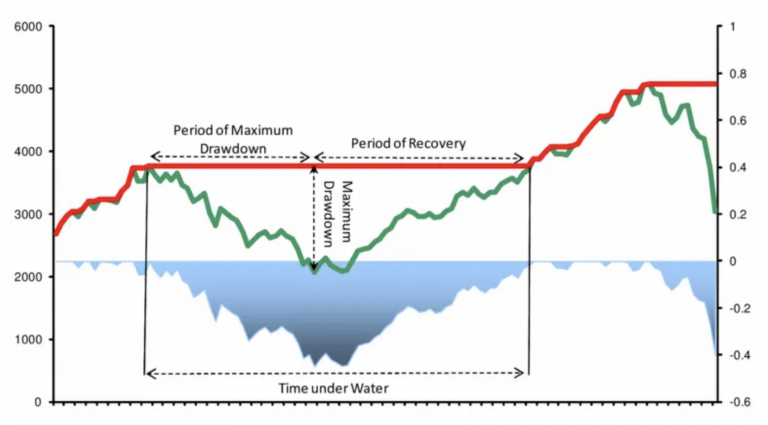

- #CALCULATE DRAWDOWN STOCK INSTALL#
- #CALCULATE DRAWDOWN STOCK FULL#
- #CALCULATE DRAWDOWN STOCK SOFTWARE#
- #CALCULATE DRAWDOWN STOCK SERIES#
MDD is an important risk assessment tool because it captures the worst-case scenario for an investment, providing insight into the potential magnitude of losses during periods of market turmoil. Investors and fund managers commonly use MDD to assess the historical risk of various assets and investment strategies. It measures the percentage loss from the peak value of an investment to its lowest point (trough) before a new peak is attained. Please drop me a note with any feedback you have.Maximum Drawdown (MDD) is a risk metric used in finance to quantify the largest decline in an investment's value over a specified time period. See the LICENSE.txt file in the release for details.
#CALCULATE DRAWDOWN STOCK SOFTWARE#
QuantStats is distributed under the Apache Software License. Monthly returns heatmap when instructed to save - so even if you save the plot (by passing savefig=) it will still show the plot. Known Issuesįor some reason, I couldn’t find a way to tell seaborn not to return the If you’d like to contribute, a great place to look is the This is a new library… If you find a bug, please Plotly >= 3.4.1 (optional, for using plots.to_plotly())
#CALCULATE DRAWDOWN STOCK INSTALL#
Install using conda: $ conda install -c ranaroussi quantstats Requirements Install using pip: $ pip install quantstats -upgrade -no-cache-dir Quantifies the amount of tail risk an investment Installation conditional_value_at_risk ) Help on function conditional_value_at_risk in module quantstats.stats:Ĭonditional_value_at_risk(returns, sigma=1, confidence=0.99)Ĭalculats the conditional daily value-at-risk (aka expected shortfall) In the meantime, you can get insights as to optional parameters for each method, by using Python’s help method: help ( qs. ( view original html file) To view a complete list of available methods, run != '_' ] ['avg_loss', Output will generate something like this:
#CALCULATE DRAWDOWN STOCK SERIES#
Let’ create an html tearsheet ( benchmark can be a pandas Series or ticker ) qs. Qs.reports.html(.) - generates a complete report as html
#CALCULATE DRAWDOWN STOCK FULL#
Qs.reports.full(.) - shows full metrics and plots Qs.reports.basic(.) - shows basic metrics and plots You can create 7 different report tearsheets: snapshot ( stock, title = 'Facebook Performance', show = True ) # can also be called via: # ot_snapshot(title='Facebook Performance', show=True) sharpe ( stock ) # or using extend_pandas() :) stock. download_returns ( 'META' ) # show sharpe ratio qs. extend_pandas () # fetch the daily returns for a stock stock = qs. Here’s an example of a simple tear sheet analyzing a strategy: Quick Start % matplotlib inline import quantstats as qs # extend pandas functionality with metrics, etc. Quantstats.reports - for generating metrics reports, batch plotting, and creating tear sheets that can be saved as an HTML file.

ots - for visualizing performance, drawdowns, rolling statistics, monthly returns, etc. Quantstats.stats - for calculating various performance metrics, like Sharpe ratio, Win rate, Volatility, etc. QuantStats Python library that performs portfolio profiling, allowing quants and portfolio managers to understand their performance better by providing them with in-depth analytics and risk metrics.Ĭhangelog » QuantStats is comprised of 3 main modules: QuantStats: Portfolio analytics for quants


 0 kommentar(er)
0 kommentar(er)
